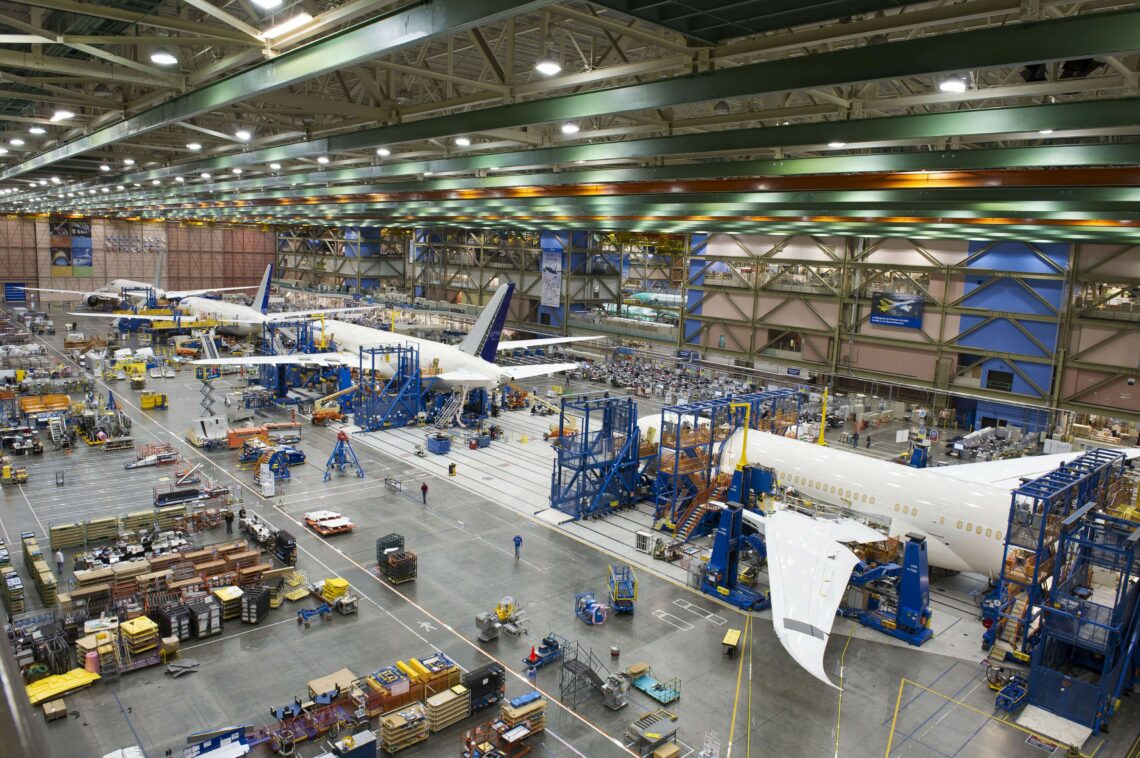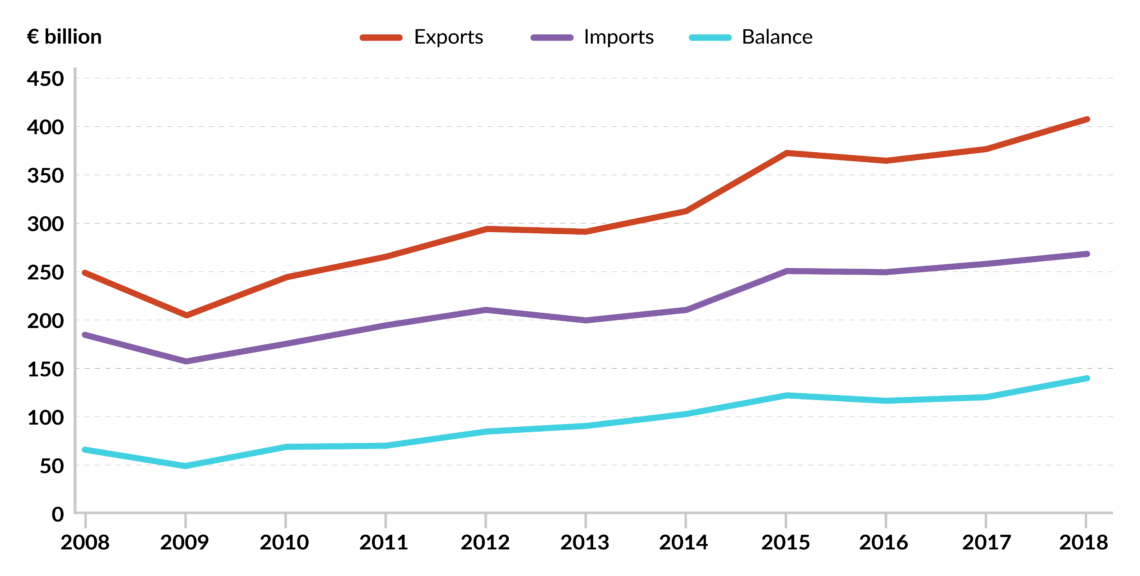Airbus vs. Boeing: A dispute resolution crisis
Many expected the Airbus-Boeing trade conflict to be over by 2020. However, the latest developments show that tensions could rise. The U.S. has not only turned down peace offers from the EU, but it has also crippled the WTO, making it difficult for Europe to retaliate.

In a nutshell
- The EU and the U.S. have long relied on the WTO to manage their aviation dispute
- By blocking the appointment of WTO judges, Washington has escalated the conflict
- The EU is likely to retaliate with tariffs if the U.S. remains unwilling to compromise
A decade-long trade dispute between European and American aircraft companies seems far from over. Last year, the European Union had expressed hope that the conflict would soon come to an end, but instead a new series of punitive tariffs were imposed.
Quid-pro-quo retaliations
To understand the current geopolitical developments, one must start at the very beginning. In the early 2000s, the United States launched a dialogue with the EU over its suspicion of illegal subsidies for Airbus through government loans, in particular from France, Germany, Spain and the United Kingdom. This led to an official complaint and a case at the World Trade Organization (WTO). The U.S. claimed that Airbus had received $22 billion in illegal aid, thus earning Airbus and the EU more than $200 billion.
Both sides were found to have illegally subsidized their aircraft makers through loans, contract terms and tax breaks.
Shortly after, the EU brought its own counter case alleging that U.S.-based Boeing had received $23 billion in illegal aid. The conflict quickly became a tit-for-tat dispute with numerous cases and counter cases. Both sides were found to have illegally subsidized their aircraft makers through a variety of loans, contract terms and tax breaks.
The situation began to escalate early in the autumn of 2019 when the WTO allowed the U.S. to impose tariffs worth billions of dollars on European goods, more specifically, 10 percent on Airbus and 25 percent on cheese, wine, whiskey, olives and the like. The ruling was clearly meant as a retaliation toward the Airbus consortium – France, Germany, Spain and the UK. With the tariffs soon followed a U.S. political power play aimed at limiting the EU’s chances of seeking out countermeasures within the WTO.
Beyond tariffs
The treaty-based WTO is an international organization created to promote free and fair trade across the world. Its appellate body, which can be described as a supreme court for global trade, is crucial for dispute resolution, as it hears appeals and has the competence to uphold, modify or reverse the legal findings and conclusions of a WTO panel. Without such a body, any trade disputes being appealed would be left in legal limbo. In effect, this would create a “wild west” environment where trade relations would follow a “might makes right” doctrine rather than international rules and binding decisions.
On December 11, 2019, the appellate body ceased to function for the first time since its creation 25 years ago. The panel is meant to have seven judges and needs a minimum of three to operate. However, in the course of the last few years, the U.S. has blocked the appointment of new judges. The body is now unable to hear disputes and issue rulings.
Facts & figures

Washington has effectively blocked the appointments of all but one judge, leaving the WTO shaken to its core. Officially, the U.S. has justified its move by claiming to have sovereignty concerns, and to be dissatisfied with the lengthy time of appeals. According to the U.S. administration, the appellate body has overstepped its authority and steered away from its task of interpreting existing law.
In the context of the Boeing vs. Airbus dispute, Washington has thus effectively ensured that the EU cannot appeal the tariffs aimed at its wine and cheese. The corresponding case, submitted by the EU on alleged illegal U.S. subsidies for Boeing, which was expected to be resolved in 2020, is now in legal limbo. Moreover, the current situation prevents future appeals against punitive U.S. measures resulting from the dispute between Boeing and Airbus. U.S. intentions to impose tariffs of up to 100 percent on additional European products as a consequence of France’s new digital services tax will also need to be tabled once the U.S. and France’s temporary tariff truce expires.
In parallel, on December 17, 2019 the U.S. House Committee on Ways and Means approved a resolution reaffirming America’s commitment to the World Trade Organization while simultaneously calling for its concerns with the WTO’s appellate body to be addressed.
Washington has ensured that the EU cannot appeal the tariffs aimed at its wine and cheese.
Scenarios
The ball is now in the EU’s court. The next move will not only determine how the dispute develops, it will also affect transatlantic trade and diplomatic relations between the two global players.
De-escalation
The EU could continue to de-escalate the situation. The EU and the U.S. have the largest bilateral trade and investment relationship in the world. Knowing that the mutual imposition of tariffs would damage both economies, the EU may roll back its potential counter-tariffs and try to address U.S. concerns over the appellate body’s far-reaching activities. In the summer of 2019, the EU proposed an interim version of the appellate body, receiving support from countries like Norway and Canada, but the initiative did not appeal to the U.S. and other large economies.
It seems unlikely that the two players will reach a truce soon. The U.S. did not respond when the EU offered, as an olive branch, to waive its right to $12 billion in compensatory measures granted by the WTO in earlier rulings (covering preselected goods such as aircraft, chemicals and ketchup). Accordingly, on December 12, 2019, European Commission President Ursula von der Leyen proposed new global trade tools to defend the EU’s interests.
Escalation
A further escalation of the dispute seems to be the more likely outcome. The EU is entitled to $12 billion worth of tariffs on American exports. It may choose to implement them, especially if the U.S. does not scale down its punitive measures in the course of 2020. This would likely make waves in transatlantic trade relationships, delaying contracts, reducing trade, and augmenting costs.
Role of China
Beijing is a key figure in this aircraft subsidy dispute. China joined the WTO in 2001, and greatly benefited from it thanks to a reduction in tariffs. It would therefore be in the Chinese government’s interest to support the interim measures initiated by the EU and become a diplomatic broker in the reform of the WTO, especially since China is also subject to U.S. tariffs. However, Beijing may have something to gain by allowing the EU-U.S. trade conflict to escalate.
Although China has a trade conflict of its own with the U.S., the Boeing vs. Airbus dispute might in fact pave the way for the Chinese aircraft maker, Comac, to enter the global market. Comac is one of the key priorities in China’s strategic Made in China 2025 plan. Since Beijing has also subsidized its own aircraft company, the appellate body’s inability to hear appeals has advantages for China as well.
The latest trade talks between China and the U.S. have resulted in the two countries signing the first phase of a trade deal on January 15, 2020. Existing U.S. tariffs and planned tariffs will be scaled down in exchange for a guarantee that China will buy certain American goods. In this context, a continuation of the transatlantic trade conflict could further increase China’s gains, potentially shifting the trade dominance away from Europe and eastward.
The big question is whether the Trump administration will manage to change the WTO mechanisms by placing its exporting hopes on China. Beijing, however, does not seem very keen on putting all its eggs in one basket. On January 21, 2020, China and the EU held the 26th round of negotiations for a Comprehensive Agreement on Investment (CAI); and although the EU was not inclined to accept China’s latest offer, the EU’s trade commissioner Phil Hogan acknowledged that the two sides were making progress – a development that will inevitably be frowned upon by the U.S.
With President Donald Trump’s impeachment stoking political uncertainty and making investors cautious, coupled with China’s recent backing of the WTO ad-hoc appeal body during the World Economic Forum in Davos, the U.S. will very likely face, sooner rather than later, the stalemate of the aviation dispute and a counterbalance on the global trading scene.








